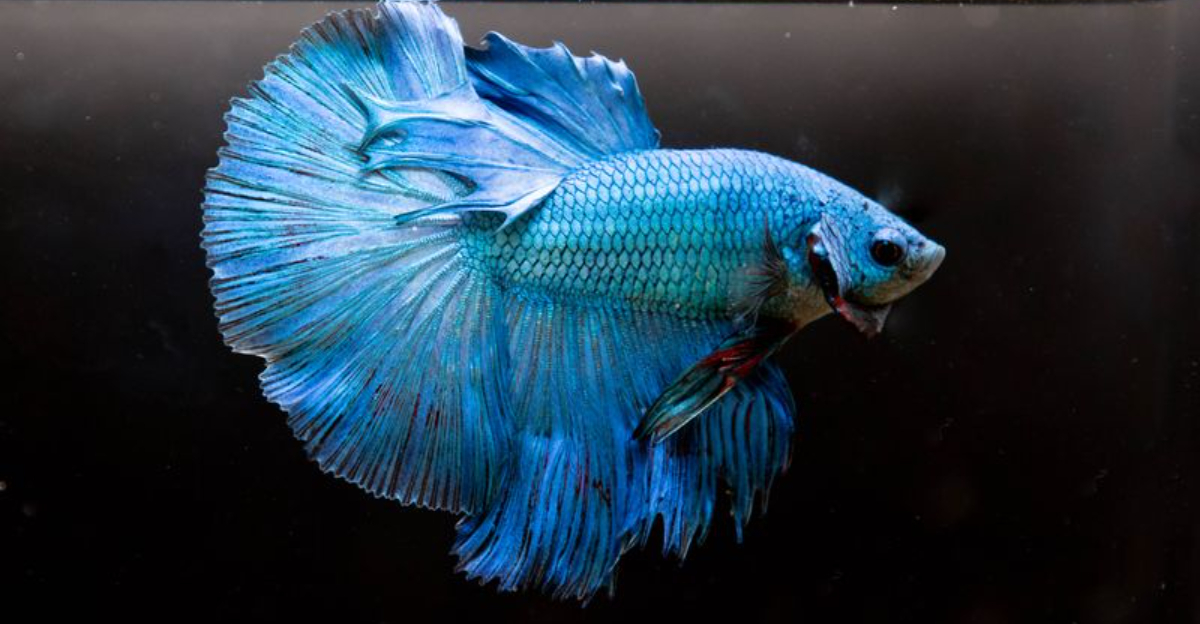Blue fish are a captivating addition to any aquarium, offering a serene and vibrant touch to the aquatic environment.
Their striking colors mesmerize and enhance the visual appeal of the tank. Let’s take a look at the best blue fish you can introduce to your aquarium, each with unique characteristics and care needs.
1. Blue Tang
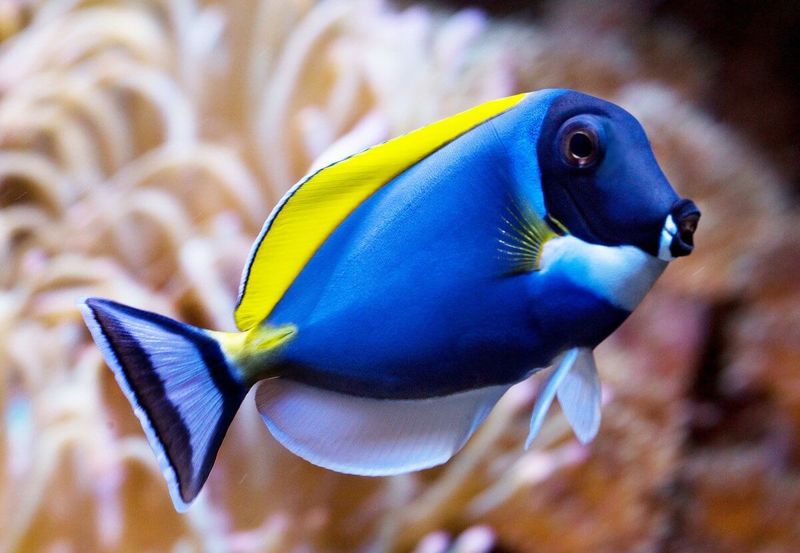
Known for its stunning blue body and yellow tail, the Blue Tang is a popular choice among aquarists. This fish not only captivates with its vibrant color but also with its active nature, making it a lively addition to any tank. Native to the Indo-Pacific region, it thrives in a marine environment with ample space.
To keep a Blue Tang healthy, it’s important to provide a diet rich in algae and marine-based flakes or pellets. This species is known for its semi-aggressive behavior, especially when housed in smaller tanks with limited swimming space. Therefore, a tank size of at least 75 gallons is recommended.
Blue Tangs are susceptible to marine parasites, so maintaining pristine water quality is crucial. Regular water changes and a robust filtration system help keep them healthy.
Despite these care requirements, their beauty and active nature make them well worth the effort. Observing a Blue Tang darting around its aquarium is a delight for any fish enthusiast, providing a splash of color and energy.
2. Electric Blue Hap
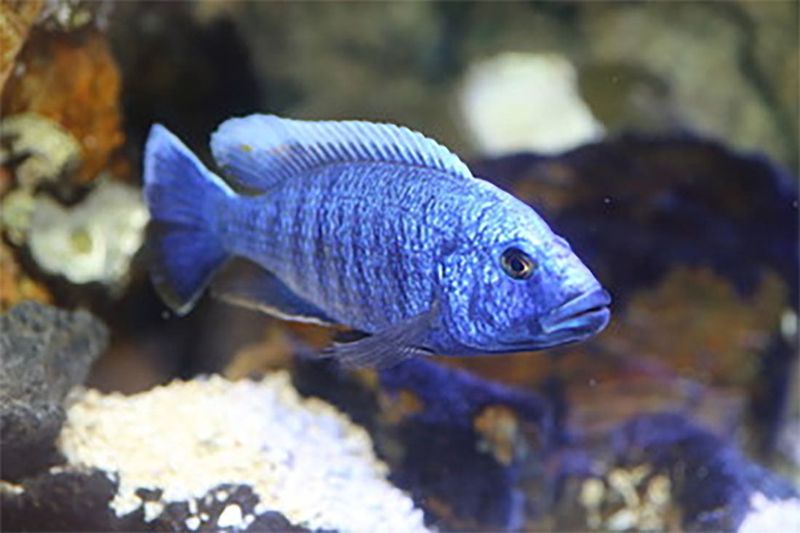
The Electric Blue Hap is a striking fish with an iridescent blue hue that glimmers in the light. These fish are native to Lake Malawi in Africa and thrive in freshwater tanks. Their vibrant color and peaceful temperament make them a favorite among hobbyists.
To ensure a happy Electric Blue Hap, maintaining a tank mimicking its natural habitat is essential. Include plenty of rocks and plants for hiding, as this fish enjoys having spots to retreat to. A tank size of at least 55 gallons is recommended to accommodate their growth and swimming needs.
Their diet should consist of high-quality cichlid pellets, along with occasional treats like brine shrimp and bloodworms.
These fish are generally peaceful but can show territorial behavior during breeding. Regular monitoring and tank maintenance will keep them healthy and vibrant.
3. Blue Ram Cichlid
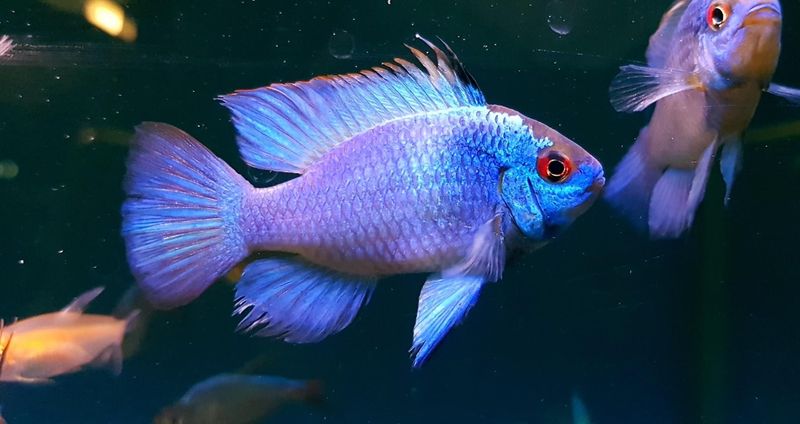
With its shimmering blue scales and touches of gold and black, the Blue Ram Cichlid is a true gem for any freshwater tank. Originating from South America, this small but colorful fish is ideal for community tanks, thanks to its peaceful disposition.
Blue Rams prefer a well-planted aquarium with plenty of hiding spots, such as driftwood and rocks. A soft substrate mimics their natural environment and encourages their natural behaviors. Keeping the water warm, between 78-85°F, closely replicates their native habitat.
Feeding them a varied diet of high-quality flakes, pellets, and live foods like worms ensures they receive proper nutrition.
Although generally peaceful, they can become territorial during breeding. The elegance of a Blue Ram Cichlid moving gracefully through its tank is a sight to behold, making them a prized addition to any aquarium.
4. Blue Guppy
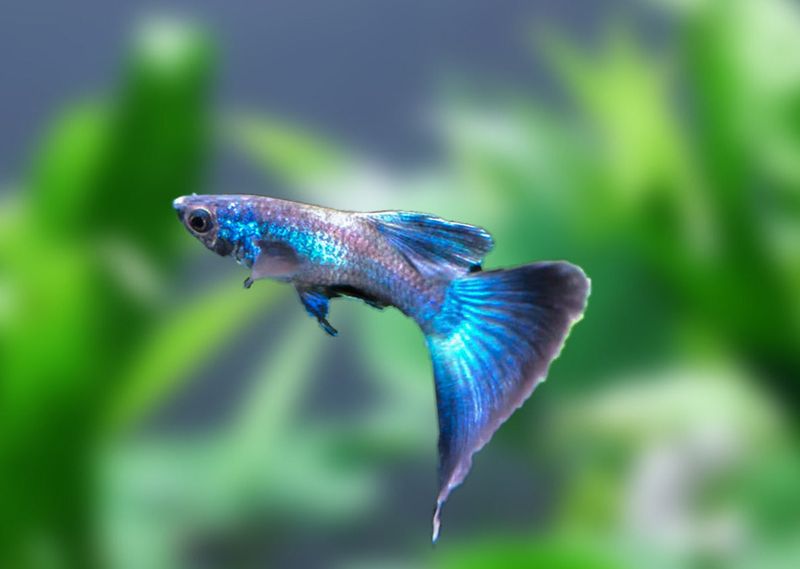
The Blue Guppy is a small but vibrant fish, cherished for its dazzling blue scales and ease of care. Ideal for beginners, this fish brings a splash of color to any freshwater tank. Guppies are incredibly social, making them a great choice for community aquariums.
Their small size means they thrive even in smaller tanks, though a minimum of 10 gallons is recommended. Plant the tank well and include floating plants to create a natural environment. Gentle water currents will mimic their native habitats in South America.
Guppies are omnivorous, enjoying a diet of high-quality flake food mixed with occasional live or frozen treats. Their social nature and ease of breeding make them fascinating to observe.
5. Blue Betta
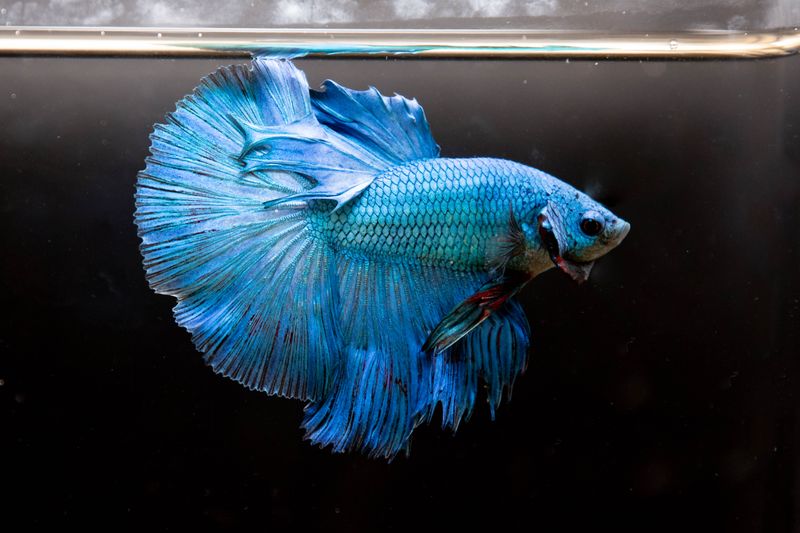
The Blue Betta, also known as the Siamese Fighting Fish, is famous for its vivid blue hues and flowing fins. These fish are native to Southeast Asia and known for their striking appearance and unique personalities.
Bettas are often kept in smaller tanks, but a 5-gallon tank with a filter and heater makes a more suitable environment. Decorate the tank with plants and hiding spots, as Bettas enjoy exploring their surroundings.
Feeding them a diet of high-protein pellets and occasional live foods like brine shrimp helps maintain their vibrant color.
While they can be aggressive towards other Bettas, they can coexist with certain other species that are non-aggressive.
6. Blue Gourami
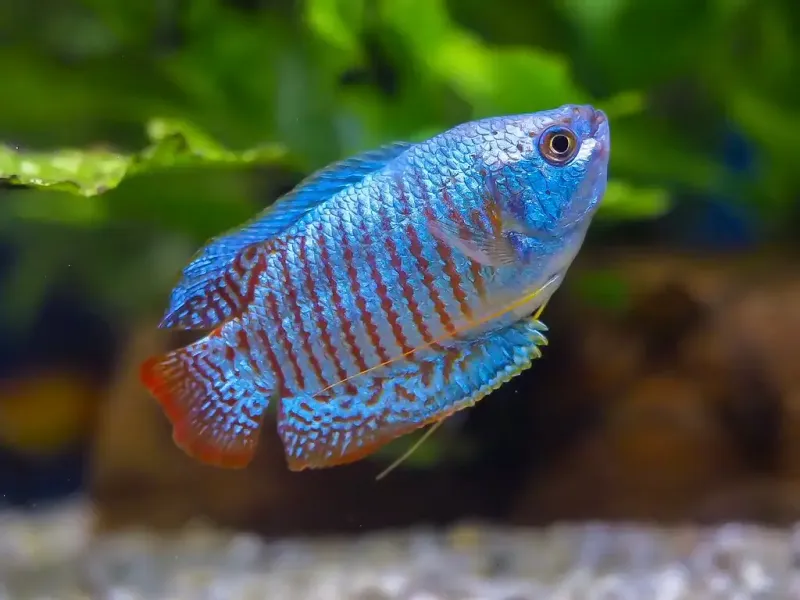
The Blue Gourami is a hardy and adaptable fish, perfect for those looking to add a touch of blue to their aquarium without too much fuss.
Originating from Southeast Asia, they are known for their peaceful nature and beautiful blue coloration.
Gouramis prefer tanks with plenty of plants and open swimming areas. A tank size of at least 20 gallons is recommended to provide adequate space. These fish are labyrinth breathers, meaning they can breathe air directly, so a tank with a secure lid is necessary.
Their diet includes flakes, pellets, and occasional live foods. Blue Gouramis are generally peaceful but can be territorial with their own kind.
Watching a Blue Gourami navigate through a lush aquarium is a calming sight, bringing tranquility and color to your aquatic setup.
7. Blue Acara
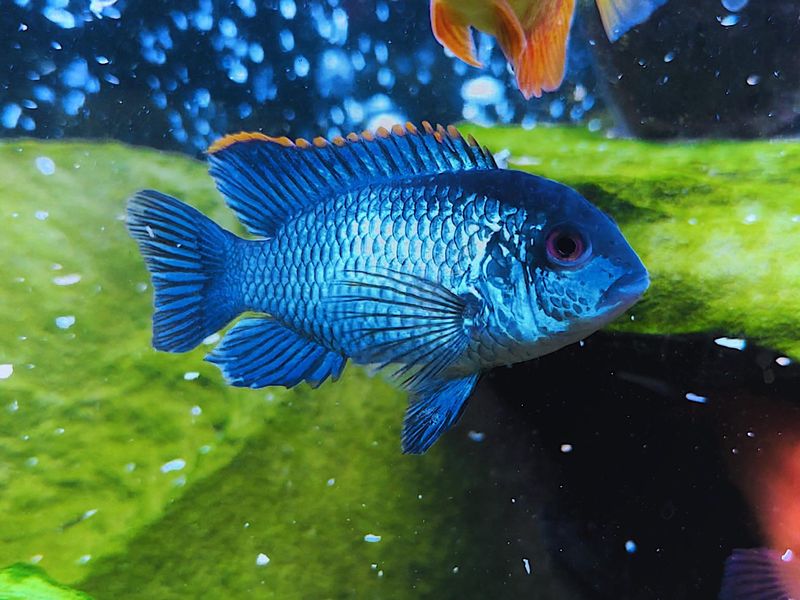
With its metallic blue sheen and gentle demeanor, the Blue Acara is a beloved choice for many aquarists. This South American native is not only beautiful but also relatively easy to care for, making it perfect for both beginners and experienced fish keepers.
Blue Acaras thrive in tanks that offer a mix of open swimming areas and hiding spots, like rocks and driftwood. A tank size of 30 gallons or more is ideal to keep them comfortable. They prefer slightly acidic to neutral water conditions, mimicking their natural habitat.
These omnivorous fish enjoy a varied diet of pellets, flakes, and live foods. Their peaceful nature allows them to coexist with other similar-sized, non-aggressive species.
8. Blue Neon Tetra
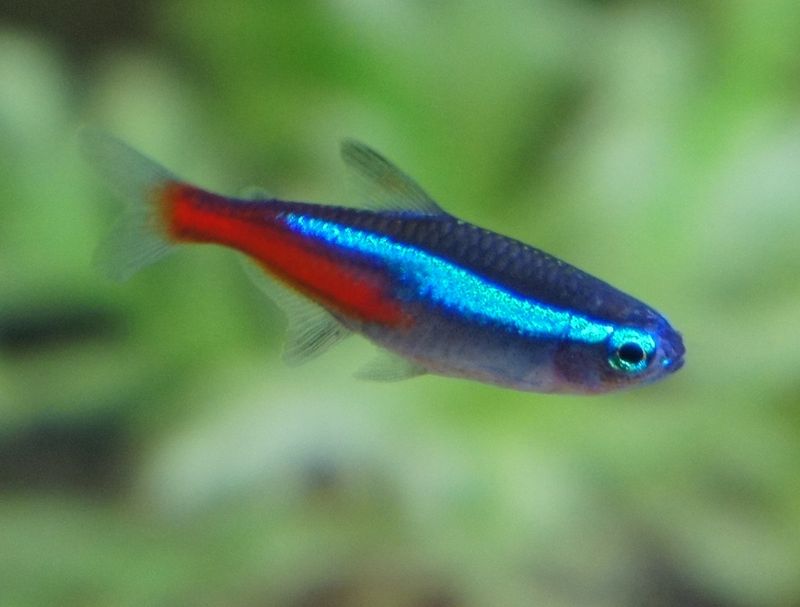
The Blue Neon Tetra is a captivating fish, loved for its shimmering blue and red stripes. Originating from the Amazon basin, these small but vibrant fish are perfect for community tanks.
They thrive in well-planted tanks with subdued lighting, which enhances their colors. A school of at least six Blue Neon Tetras is recommended to keep them happy, as they are naturally social creatures. A tank size of 20 gallons or more is ideal.
Feeding them a diet of high-quality flake food supplemented with live or frozen treats ensures they stay healthy and vibrant.

